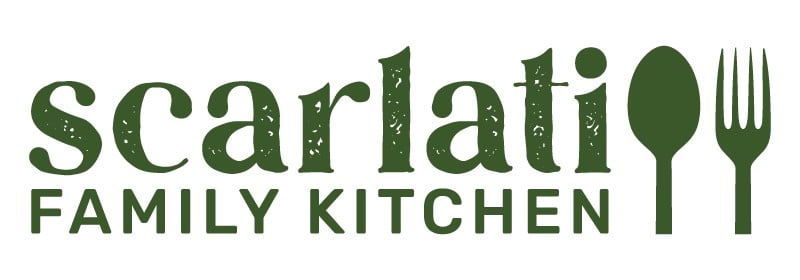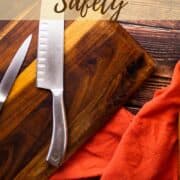Knife skills are one of the most important skills you can master in the kitchen. Learning these basic kitchen knife safety tips can help keep you safe and prevent accidents.

🔪 Handle the knife in the right way
It's important to know how to handle this kitchen utensil, even when you aren't using them to cut. Here are some knife safety tips to follow before getting started.
- Always pick up your knife by the handle grip. Grabbing it by the blade, even when its dull, can set you up for an unintentional accident.
- When walking around the kitchen its a good idea to carry knives pointed down and close to your body.
- Keep your knives visible when they are not being stored. Sharp knives in a sink full of soapy water or under a towel can be a recipe for disaster.
- Do your best to get out of the way of a falling knife and do not try and catch it.
🔪 Pick the right knife for the job
Now that you are ready to use your knives, it's important to pick the right knife for the job. Using a knife that is too big or not the right blade type can make things difficult and possibly cause injury.
- Use the proper size and type knife for what you are doing. There are different types of knives that are good for different things. Using a knife that is too big or not meant for a certain task can make the job harder.
- Don't use knives for things that they aren't intended for, like opening cans or bottles. This can cause damage to your knives and you also run the risk of accidentally cutting or poking yourself.
- Check the blade size, flexibility and type of blade to ensure it is the right knife for the task you are using it for.
🔪 Using kitchen knives properly
Now that you have the proper knife for the job, here are best practices to help prevent injury while using a knife for food preparation.
- Always cut food on a flat work surface to avoid slippage and injury.
- The best way to secure a slippery cutting board is to place a damp cloth or kitchen towel underneath it. This will help to make sure it doesn't slip and you stay safe.
- Always cut away from yourself, not towards your hand or body.
- Placing your hand in a claw shape on the food is a good thing to do to prevent your fingers from getting in the way of the knife blades.
- Don't rush when cutting, it's ok to take your time. Keep your eyes on what you are cutting and where the sharp edge of the knife is going.
- Make sure to keep the area clean and free of scraps to prevent knife slips.
🔪 Taking care of your kitchen knives
As important as it is for you to use a knife properly, it's equally as important to wash and take proper care of them after the fact. Here are some basic rules to follow to keep your knives in tip top shape!
- After using your knives, make sure to wash them right away with hot water and soap. Food items left on the knife can cause bacteria to grow or cause damage.
- Even if your knives say they are dishwasher safe, it's best to wash them by hand. The detergent can be harsh on the knives. To get the most life out of them, hand washing is best. Make sure to check crevices where food can accidentally get stuck.
- Make sure to thoroughly wipe your knives dry before storing them.
- Store knives in knife blocks, a knife roll or magnetic strip. Storing them in a drawer with other knives or utensils is one of the easiest ways to cause damage to the sharp blade.
- Sharpening your knives on a regular basic can reduce the risk of injury and extend the longevity of your knives. A dull knife is a dangerous knife and can cause slippage when you are cutting. Dull knives also make a task hard to complete, so always make sure you start with a sharp knife. A knife sharpener or honing steel is a great thing to keep in your kitchen tool collection.
Kitchen knives are an essential tool in any home kitchen. Proper knife training is an important skill to master to keep you free from knife accidents. Make sure to put these skills into practice in your kitchen so you can easily master the art of cooking from scratch.
If you ever don't recognize a tool or skill that I mention, be sure to look it up in the Glossary of Cooking Terms and Definitions for more information.






Comments
No Comments